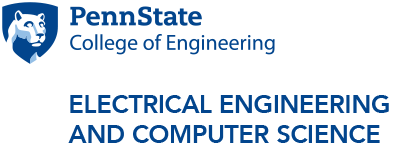EE Colloquium: HamSCI – The Ionosphere from your Backyard
Zoom Information: Join from PC, Mac, Linux, iOS or Android: https://psu.zoom.us/j/140346904
Or iPhone one-tap (US Toll): +13126266799,140346904# or +16468769923,140346904#
Or Telephone:
Dial:
+1 312 626 6799 (US Toll)
+1 646 876 9923 (US Toll)
+1 253 215 8782 (US Toll)
+1 301 715 8592 (US Toll)
+1 346 248 7799 (US Toll)
+1 669 900 6833 (US Toll)
Meeting ID: 140 346 904
International numbers available: https://psu.zoom.us/u/abzciyPQsy
Or an H.323/SIP room system:
H.323:
162.255.37.11 (US West)
162.255.36.11 (US East)
221.122.88.195 (China)
115.114.131.7 (India Mumbai)
115.114.115.7 (India Hyderabad)
213.19.144.110 (EMEA)
103.122.166.55 (Australia)
209.9.211.110 (Hong Kong)
64.211.144.160 (Brazil)
69.174.57.160 (Canada)
207.226.132.110 (Japan)
Meeting ID: 140 346 904
Abstract: Recent advances in geospace remote sensing have shown that large-scale distributed networks of ground-based sensors pay large dividends by providing a big picture view of phenomena that were previously observed only by point-measurements. While existing instrument networks provide excellent insight into ionospheric and space science, the system remains undersampled and more observations are needed to advance understanding. In an effort to generate these additional measurements, the Ham Radio Science Citizen Investigation (HamSCI, hamsci.org) is working with the Tucson Amateur Packet Radio Corporation (TAPR, tapr.org), an engineering organization comprising of volunteer amateur radio operators and engineers, to develop a network of Personal Space Weather Stations (PSWS) that will provide scientific-grade observations of signals-of-opportunity across the HF bands from volunteer citizen observers as part of the NSF Distributed Array of Small Instruments (DASI) program. A performance-driven PSWS design (~US$500) will be a modular, multi-instrument device that will consist of a dual-channel phase-locked 0.1-60 MHz software defined radio (SDR) receiver, a ground magnetometer with (~10 nT resolution and 1-sec cadence), and GPS/GNSS receiver to provide precision time stamping and serve as a GPS disciplined oscillator (GPSDO) to provide stability to the SDR receiver. A low-cost PSWS (< US$100) that measures Doppler shift of HF signals received from WWV in Ft. Collins, CO and includes a magnetometer is also being developed. HF sounding algorithms making use of signals of opportunity will be developed for the SDR-based PSWS. All measurements will be collected into a central database for coordinated analysis.
Biography: Dr. Nathaniel Frissell (W2NAF) is a Space Physicist and Electrical Engineer. Dr. Frissell has a passion for radio science and remote sensing of the ionosphere. He was introduced to space physics and space weather in middle and high school through the hobby of amateur (ham) radio, where he was fascinated by long-distance radio propagation and the variability imposed on it by the geospace system. In addition to leading him to pursue a Ph.D. in this field, it enabled him to found and lead the Ham radio Science Citizen Investigation (HamSCI, hamsci.org), a citizen science collective that aims to bring together the professional research and the amateur radio communities. This has led to the Solar Eclipse QSO Party, a nationwide ham radio experiment to study the August 21, 2017 Total Solar Eclipse (hamsci.org/seqp), and an ongoing collaboration with the amateur radio electrical engineering organization TAPR (tapr.org) to develop a Personal Space Weather Station (hamsci.org/swstation). For his efforts, the amateur radio community has awarded him the prestigious 2017 Yasme Foundation Excellence award and the 2019 Dayton Amateur Radio Association Amateur of the Year Award.
Event Contact: Tim Kane



